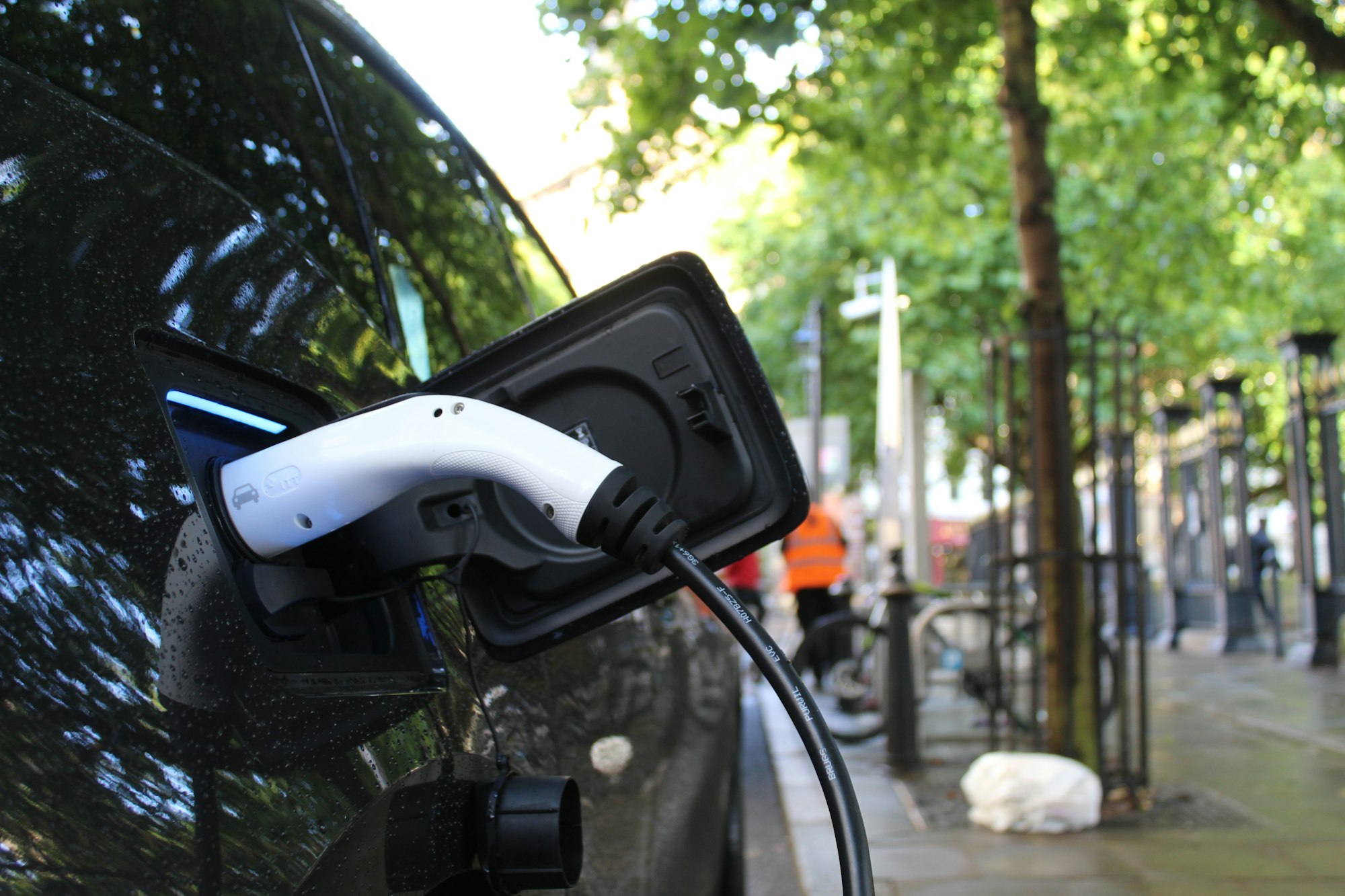Earth Day - Environment, Climate Change, Recycle, Energy and more

Earth Day is an annual event celebrated on April 22 to demonstrate support for environmental protection. First held on April 22, 1970, it now includes a wide range of events coordinated globally by EARTHDAY.ORG (formerly Earth Day Network) including 1 billion people in more than 193 countries. The official theme for 2023 is Invest In Our Planet.
Earth Day is a day to educate the public about environmental issues and to encourage them to take action to protect the planet. People celebrate Earth Day in a variety of ways, such as:
- Planting trees
- Cleaning up litter
- Recycling
- Conserving energy and water
- Learning about environmental issues
- Advocating for environmental protection
Earth Day is a reminder that we all have a role to play in protecting our planet. By taking small steps to reduce our impact on the environment, we can make a big difference. Below are some of the top questions often asked.

What is bad for environment?
Is almond milk bad for the environment?
Yes, almond milk is bad for the environment. Almond milk is one of the worst offenders when it comes to water use and carbon emissions1. Almond farming in the US is especially hard on bees and requires more water than any other dairy alternative, consuming 130 pints of water to produce a single glass of almond milk. The fertilizer used on almond crops is also toxic to insects. Almond milk's high water consumption and consequent droughting effect make it harmful to the environment.
Is lithium mining bad for the environment?
Yes, lithium mining is bad for the environment. The common environmental side effects of lithium mining are water loss, ground destabilization, biodiversity loss, and increased salinity of water. The entire lithium extraction process contributes to an increase in carbon dioxide and other greenhouse gases in the atmosphere. Lithium extraction harms the soil and causes air contamination. Lithium mining may also cause groundwater contamination with metals.
Is natural gas bad for the environment?
The ecological implications of natural gas consumption are undeniably intricate and multifaceted. While natural gas incineration is demonstrably more environmentally friendly compared to other fossil fuel alternatives, yielding virtually inconsequential levels of sulfur, mercury, and particulate matter, it concurrently releases greenhouse gases such as methane—a notably potent contributor to climate change.
Furthermore, the combustion process has a propensity to diminish overall air quality. Natural gas extraction and production can engender a host of environmental quandaries, encompassing water contamination, community disturbances, and seismic activity. The potential role of natural gas in shaping the global energy landscape is inescapably tethered to its capacity to effectively mitigate such environmental challenges.
Is silicone bad for the environment?
Silicone's biodegradability, or lack thereof, remains a contentious topic when evaluating its environmental repercussions. Exhibiting chemical stability, silicone refrains from morphing into toxic substances or leaching toxins while degrading. Its innate resistance to oxidative deterioration enables it to persist for extended periods.
Nevertheless, silicone's role in exacerbating environmental issues, such as plastic pollution, cannot be disregarded. As a non-biodegradable material, silicone fails to decompose into natural constituents and reintegrate into the ecosystem. Consequently, the true extent of silicone's impact on our environment necessitates further investigation and continues to fuel debate among experts.
Is fracking bad for the environment?
Indubitably, hydraulic fracturing, or fracking, poses detrimental environmental consequences. The ecological ramifications encompass land utilization, water consumption, air emissions (including potent methane emissions), leakage of brine and fracturing fluids, water pollution, noise pollution, and health implications. The extraction process of fracking contributes to air pollution when methane escapes from the apparatus, exacerbating the greenhouse effect. The release of harmful substances, such as nitrogen oxides, benzene, hydrogen sulfide, and a slew of other hydrocarbons, culminates in the formation of smog and ozone, potentially compromising the well-being of nearby residents.
Fracking necessitates copious water resources, which are at risk of contamination, potentially impacting local aquifers. Moreover, fracking may inflict long-lasting repercussions on soil composition and the surrounding flora.
Climate Change Effects
How does climate change affect us?
The multifaceted implications of climate change extend to human well-being and disease proliferation in many ways. This complex phenomenon influences various social and environmental determinants of health, encompassing pure air, potable water, ample nourishment, and stable accommodation. Not only does climate change exacerbate pre-existing health hazards, but it also catalyzes the emergence of novel health threats. The repercussions of climate change on health are manifested both directly and indirectly, with considerable mediation by environmental, societal, and public health determinants.
The ramifications of climate change can induce extreme meteorological occurrences, alterations in the prevalence and geographic dispersion of food- and water-borne maladies, the spread of infectious diseases, and mental health challenges.
Moreover, climate change can detrimentally impact food production and human health through droughts that result in water scarcity and food insecurity. Climate change's far-reaching consequences encompass escalating temperatures, precipitation fluctuations, heightened frequency or intensity of select extreme weather events, and the inevitable rise of sea levels.
How does climate change affect the environment?
The multifaceted repercussions of climate change reverberate throughout our environment, manifesting in myriad ways. The phenomenon has catalyzed a surge in heat, aridity, and insect infestations, thereby intensifying the frequency and severity of wildfires. As an ongoing process, climate change has already begun to leave its indelible mark on ecosystems and human societies across the globe.
The intricate interplay between social and environmental determinants of well-being—such as pristine air, potable water, ample nourishment, and stable housing—is profoundly influenced by climate change. The planet's aqueous systems are not exempt from the onslaught, as they grapple with heightened flooding and droughts. Moreover, climate change exacerbates average temperatures, prolongs droughts, amplifies wildfires, and bolsters storms. The ramifications of climate change on our environment are far-reaching and poised to escalate in the future.
How does climate change affect animals?
The repercussions of climate change on the animal kingdom are manifold and far-reaching. Escalating temperatures exert a profound influence on flora, sustenance provisions, potable water accessibility, and a plethora of additional factors, thereby jeopardizing indispensable biodiversity and engendering habitat depletion.
Climate change instigates an upsurge in the frequency and intensity of droughts, tempests, heatwaves, and ascending ocean levels, thereby imperiling forage availability and fostering habitat deterioration. Moreover, climate change augments disease prevalence rates and impacts terrestrial, aerial, and aquatic wildlife.
Furthermore, climate change triggers alterations in the chronology of cyclical phenomena, such as migration, hibernation, and procreation, thereby destabilizing the intricate equilibrium of ecosystems. The multifaceted consequences of climate change on animals are anticipated to intensify in the forthcoming future.
How does climate change affect the ocean?
The repercussions of climate change on the ocean are multifaceted and complex. Astonishingly, the ocean has absorbed roughly 90 percent of the thermal energy produced by escalating emissions, yielding many consequences, including ice melt, sea-level surge, intensified marine heatwaves, and pervasive ocean acidification. The ocean's warming, induced by climate change, triggers a cascade of events, such as thermal expansion, leading to elevated sea levels and alterations in ocean currents.
Furthermore, climate change precipitates lengthier and more extreme marine heat waves, potentially driving many marine species to the brink of extinction. Additionally, climate change exacerbates the rate of ocean acidification, characterized by a long-term decline in the ocean's pH. The myriad ways climate change impacts the ocean are anticipated to intensify as time progresses.
How does climate change affect the water cycle?
The ramifications of climate change on the water cycle manifest in myriad ways. As the Earth's atmosphere warms, the water cycle intensifies, resulting from heightened evaporation rates and the air's augmented capacity to retain moisture. Consequently, the water cycle experiences an acceleration in certain regions as global temperature increases, influencing evaporation and precipitation. Cutting-edge research substantiates that anthropogenic climate change is spurring a hastened water cycle in specific areas across the globe.
The accessibility of water resources for human populations is already witnessing the detrimental effects of climate change as more acute droughts and floods transpire. The relentless escalation of the climate crisis propels the water cycle to revolve with ever-increasing velocity. Satellite data validates the intensification of the water cycle, while projections indicate that the repercussions of climate change on the water cycle will only intensify in the years to come.

What can you recycle?
Can you recycle solar panels?
Yes, solar panels can be recycled. Recycling typically involves crushing, shredding, and milling the panels, usually after removing the frame and junction box. Silicon solar modules mainly comprise glass, plastic, and aluminum, all materials recycled in mass quantities. However, recycling solar panels can be difficult due to the high temperatures required to loosen the adhesive. In addition, some materials located within the solar cells may be more difficult to recycle, such as silver, copper, lead, and cadmium. While recycling efforts are limited in scope, some waste facilities can recycle solar panels using mechanical methods.
There are currently no federal regulations mandating solar panel recycling in the United States, but some states and countries have recycling requirements in place.
Can you recycle pillows?
The answer is yes, you can recycle pillows. However, down pillows are not accepted for recycling, but you can compost the feathers, separating the fabric for recycling if it is made of natural fibers. If your pillows are too well-worn to repurpose or donate, the next best option is to recycle them. Textile recycling facilities across the United States will gladly accept old pillows. Another way of recycling pillows is to use them to stuff other pillows. Just remove the stuffing and put it in another pillow. Additionally, animal shelters always need used pillows and bedding, which is a great way to upcycle your old pillows.
Can you recycle paint cans?
Yes, you can recycle paint cans. If you have emptied, a paint can, let the residue air-dry, then recycle the can with other metals. Many community recycling programs accept paint cans this way. If you have unused paint, you can recycle it at a PaintCare retail drop-off site near you. The products must be in original containers with a label and secure lid. You can also recycle clean, empty metal paint cans, lids, and plastic paint buckets at the curb. However, plastic paint bucket lids cannot be recycled.
Some drop-off sites do not accept aerosols (spray cans), leaking, unlabeled, or empty containers. California has a Paint Stewardship Program to encourage recycling and properly managing paint. Empty paint cans and non-program products can also be recycled.
Can you recycle packing paper?
Yes, you can recycle packing paper. White or brown packing paper is 100% recyclable and is accepted for curbside recycling. Please place it in your recycling bin or take it to your nearest recycling center. Using newspaper to wrap breakables and fill dead space in boxes is also a great option because it is easily recyclable. Additionally, some companies offer 100% recycled and biodegradable packing paper that is curbside recyclable.
When recycling packing paper, make sure it is not laminated or glitter-decorated, as these types of paper cannot be recycled. In Cambridge, Massachusetts, wrapping paper and clean containers, foil, paper, and cardboard are accepted in the recycling bin.
Can you recycle christmas lights?
Yes, you can recycle Christmas lights. There are several ways to recycle Christmas lights. You can take them to a local waste management facility or find a local recycling company to handle your lights and recycle the copper, glass, and plastic. Some companies pay a small amount per pound of lights. Even the newer LED-type Christmas light sets are entirely recyclable. It's vital to keep those synthetic plastic and PVC materials.
Some companies take your lights to their recycling center, where they're chopped into pieces, and the cardboard shipping boxes are recycled. The pieces are then sorted by material and sent to the appropriate recycling facility. Hardware stores like Ace Hardware, Home Depot, Lowe's, and True Value often accept old Christmas lights for recycling.

Most asked Electric Vehicle (EV) questions
Top questions on driving an EV
How far can you drive an electric car?
The extent to which an electric automobile can traverse depends on the battery's capacity and how the vehicle is maneuvered. The information procured in December 2022 shows that the mean electric vehicle can journey approximately 341 km (211 miles). Comparatively, the median all-electric vehicle range in 2020 stood at 260 miles, with select models surpassing the 400-mile mark. Most contemporary electric vehicles boast a minimum 250-mile range, with some reaching an impressive 400 miles.
However, the precise range of an electric automobile is subject to variation due to factors such as driving conditions, ambient temperature, and velocity. A few noteworthy electric vehicles, including the Porsche Taycan Plus Sport Turismo and the Skoda Enyaq Coupe iV 80, claim an exceptional 445-mile range.
How to drive an electric car?
Driving an electric car is similar to driving a gasoline-powered car, but there are some differences to remember. Firstly, be gentle with the throttle, as electric cars can deliver instant torque, so avoid putting your foot down too often. One of the main concerns with driving an electric car is the distance it will cover before the power runs out and the battery needs recharging. While electric vehicles are naturally more efficient than gasoline-powered cars, it's important to plan your route and charging stops accordingly. Electric cars are fun to drive, with quick acceleration and desirable performance.
Unlike gas-powered cars, electric motors produce peak torque. The car has no distinct gears to select because an electric motor doesn't require gears. Instead, the motor spins in one direction to drive the wheels and in the other direction to regenerate energy when braking.
Why can't electric cars charge themselves while driving?
Electric vehicles cannot recharge autonomously during transit due to the inherent energy loss that occurs throughout the process of locomotion. Simply put, an electric car utilizes energy stored within its battery reserves. It is worth noting that electric vehicles do engage in a fraction of recharging while in motion utilizing regenerative braking, which transmutes a portion of the vehicle's kinetic energy into electrical power, subsequently recharging the battery. Alas, this procedure alone is insufficient to achieve a full battery recharge while driving.
Moreover, electric automobiles lack an engine capable of generating electricity during travel, unlike their gasoline-fueled counterparts, which produce electricity via an alternator. Despite advancements in self-charging electric vehicles, the technology required to facilitate autonomous recharging during driving remains elusive. Energy conversion processes are inherently less than completely efficient, resulting in a portion of energy dissipating as heat, thus rendering it infeasible for electric cars to recharge themselves during operation.
How much does it cost to drive an electric car?
Navigating the expenses associated with electric car operation necessitates understanding numerous contributing factors, such as electricity pricing, vehicular efficiency, and traversed mileage. AAA's data reveals that a compact electric vehicle demands an average of $546 in electricity for a 15,000-mile annual journey. At the same time, a comparable gasoline-fueled automobile incurs an average expense of $1,255 for the same distance. Home charging station installation costs fluctuate based on geographic location, with the highest expenses in the Western U.S. and the lowest in the Central U.S. states.
A moderately-priced electric car, like the Chevrolet Bolt, Nissan Leaf, or Tesla Model 3, entails a $12.95 expenditure for traversing 100 miles, factoring in charging and maintenance costs. Kelley Blue Book estimates that energizing an electric vehicle for 1,000 miles amounts to approximately $50. However, electric car operation costs are subject to regional electricity pricing and vehicle efficiency. As of April 2023, covering 100 miles in an electric vehicle is marginally costlier than in a gasoline-powered counterpart.
How much money do you save driving an electric car?
Operating an electric vehicle (EV) may substantially alleviate the financial burdens associated with fuel expenses and upkeep. A comprehensive investigation conducted by the U.S. Department of Energy's National Renewable Energy Laboratory in collaboration with the Idaho National Laboratory revealed that EV proprietors could potentially amass a staggering $14,500 in fuel savings over a 15-year ownership period. This translates to nearly $1,000 of annual savings.
Furthermore, the expenditure associated with powering an electric automobile is believed to correspond to a mere $2 per gallon of gasoline, a figure that is substantially more economical than prevailing gasoline prices in the majority of regions.
In addition to fuel savings, electric vehicles boast considerably lower maintenance costs when juxtaposed with their gasoline-fueled counterparts. On average, after a three-year period, EV owners disbursed a mere $378 on servicing and repairs, while the corresponding figure for gasoline-powered vehicles stood at $615. A 2020 Consumer Reports analysis substantiated these findings, concluding that EVs slashed repair and maintenance expenses by an impressive 50 percent when compared to analogous gasoline-fueled automobiles.
Top questions on buying an EV
What is the cheapest electric car you can buy?
The most economical electric automobiles available for purchase are subject to regional and model-specific fluctuations. Cars.com enumerates 11 wallet-friendly electric vehicles encompassing the Chevrolet Bolt EV, Bolt EUV, Nissan Leaf, Hyundai Kona Electric, Mini Cooper SE, Kia Niro EV, Volkswagen ID.4, Ford Mustang Mach-E, Tesla Model 3, Polestar 2, and Audi Q4 e-tron. Autotrader presents a roster of 10 budget-conscious new electric cars, including the 2023 Chevrolet Bolt EV, 2023 Nissan Leaf, 2023 Hyundai Ioniq Electric, 2023 Kia Niro EV, 2023 Mini Cooper SE, 2023 Volkswagen ID.4, 2023 Ford Mustang Mach-E, 2023 Polestar 2, 2023 Audi Q4 e-tron, and 2023 BMW i3.
The expense associated with electrifying an automobile varies geographically, with Western U.S. installation costs spanning $950 to $1,300 and the Central U.S. states boasting the lowest expenses. The Detroit Free Press study reveals that mid-tier E.V.s like the Chevrolet Bolt, Nissan Leaf, or Tesla Model 3 necessitate an expenditure of $12.95 for a 100-mile journey, accounting for factors such as commercial charger utilization for recharging. U.S. News & World Report ranks the most cost-effective electric vehicles in 2023, featuring the 2023 Chevrolet Bolt EV, 2023 Nissan Leaf, 2023 Hyundai Ioniq Electric, 2023 Kia Niro EV, 2023 Mini Cooper SE, 2023 Volkswagen ID.4, 2023 Ford Mustang Mach-E, 2023 Polestar 2, 2023 Audi Q4 e-tron, and 2023 BMW i3.
How to buy an electric car?
Embarking on the journey to acquire an electric vehicle entails initiating a thorough investigation into the available models and their accompanying features. Proceed to secure or lease a brand-new electric car from a dealership or acquire a pre-owned one from a new car dealer, used car dealer, or private vendor.
Electric vehicles within the $35,000-$60,000 price bracket typically boast a range of 200-300 miles, while exceeding 350 miles of range entails a considerably heftier investment. Evaluate the financial implications of vehicle charging, which may fluctuate depending on the region and electricity costs. On average, electric automobiles significantly outperform their gas-powered counterparts in terms of fuel expenses.
After settling on a suitable model, visit a dealership to experience a test drive and engage in price negotiations. Nevertheless, the scarcity of electric cars, particularly during peak demand, can pose a challenge. Contemplate purchasing a secondhand electric vehicle, although the limited availability and potentially reduced range of older models should be factored into the decision.
What electric car should I buy?
Selecting the ultimate electric vehicle hinges upon your individual requirements and predilections. Tom's Guide delineates the preeminent electric automobiles for 2023, encompassing the Kia EV6, Nissan Leaf, Tesla Model Y, Ford F-150 Lightning, Mercedes Benz EQS (Sedan), and Audi Q4 e-tron. In contrast, U.S. News & World Report confers the title of the finest electric car to the 2023 Hyundai Ioniq 6, boasting an impressive cumulative score of 8.3 out of 10. Luxury electric car enthusiasts will relish the 2023 BMW i7 and the 2023 Audi e-tron GT.
For those seeking budget-friendly options, Autotrader enumerates the 10 most economical electric vehicles on the market, including the 2023 Hyundai Ioniq, 2023 Hyundai Kona Electric, 2023 Tesla Model 3, 2023 Chevrolet Bolt EV, 2023 Kia Niro EV, 2023 Mini Cooper SE, 2023 Volkswagen ID.4, 2023 Nissan Leaf, 2023 Ford Mustang Mach-E, and 2023 Polestar 2. Lastly, MotorTrend extols the 2023 Chevrolet Bolt EV and the 2023 Kia Niro EV as their top-rated electric car models.
Why should I buy an electric car?
Numerous compelling incentives beckon prospective buyers to contemplate acquiring an electric vehicle. Primarily, electric automobiles boast substantially diminished fuel expenses compared to their combustion engine counterparts, yielding long-term financial savings. Research conducted by esteemed institutions such as the U.S. Department of Energy's National Renewable Energy Laboratory and the Idaho National Laboratory highlights the potential for EV owners to amass up to $14,500 in fuel savings over a 15-year ownership period. Moreover, electric vehicles necessitate lower maintenance expenditures, translating to reduced costs for repairs and upkeep. Emitting zero pollutants, these eco-friendly machines substantially curtail your carbon footprint, enhancing air purity.
Furthermore, charging electric vehicles is convenient, enabling owners to power up their automobiles at home during nocturnal hours when electricity rates typically plummet. Albeit the initial investment for electric vehicles might surpass that of gasoline-powered automobiles, the long-term advantages warrant serious consideration despite potential limitations for single-vehicle households.
How much does it cost to buy an electric car?
The price tag associated with acquiring an electric vehicle (EV) fluctuates based on the specific model and geographical region. As per CarEdge's data, the mean expenditure for a spanking new electric automobile in the U.S. stood at $58,940 in September 2022. In contrast, Kelley Blue Book approximations peg the average cost for a fresh EV to exceed $66,000, substantially surpassing the industry norm.
When pitted against their gasoline-fueled counterparts, electric autos generally carry a premium of 10 to 15 percent, albeit a downward trend has emerged in recent times. Despite the steeper initial investment required for EVs, which tend to hover between $30,000 and $40,000, the long-term financial benefits of diminished fuel and upkeep expenses render them an attractive option. We Predict's analysis reveals that, on average, EV proprietors disbursed $378 on servicing and restoration after a three-year period, as opposed to $615 for gasoline-driven models.
Moreover, the expense of energizing an electric vehicle exhibits regional variations, with installation fees oscillating between $950 and $1,300 in the Western U.S., and dipping to the lowest rates in the Central U.S. states.

How to save energy?
Does dimming lights save energy?
Dimming lights can potentially conserve energy, but the degree of energy conservation hinges on the specific light bulb and dimmer switch employed. As per SaveOnEnergy, energy conservation is facilitated by light dimmers, which curtail the electrical current flowing to the bulb, enabling the lights to function at diminished wattage, ultimately prolonging the bulb's lifespan. Nonetheless, when lights are dimmed, they continue to draw power for the conversion of energy into illumination, which doesn't inherently alter the energy consumption.
Energy savings are achievable with dimmable LEDs, which can be substantial, but the extent of energy conservation relies on the kind of dimmer switch utilized and the light's brightness level. Moreover, the efficiency of dimming incandescent bulbs pales compared to utilizing a lower-wattage bulb, rendering it more prudent to opt for a lower-wattage bulb rather than a dimming one with higher wattage. In essence, while dimming lights has the potential to conserve energy, the actual energy savings are contingent upon the specific light bulb and dimmer switch used.
Does unplugging appliances save energy?
Disconnecting devices has the potential to conserve power; nevertheless, the extent of energy preservation hinges on the specific appliance and its frequency of utilization. My Energy Monster posits that detaching appliances post-use yields only marginal electricity savings, thus not constituting the most efficient energy-saving method. Conversely, unplugging idle appliances can bolster energy conservation and curtail electricity expenses. The United States Department of Energy asserts that homeowners may witness annual savings ranging from $100 to $200 by disconnecting inactive devices.
Furthermore, the Department of Energy approximates a 10% monthly savings upon unplugging appliances during periods of non-use. This practice can also mitigate the likelihood of electrical fires while prolonging appliance longevity. Appliances that persist in consuming power despite being switched off, such as televisions, computers, and chargers, are prime examples of devices warranting disconnection during dormancy. In essence, while disconnecting appliances can promote energy conservation and diminish electricity costs, the precise degree of energy savings depends on the appliance category and usage patterns.
Does closing vents save energy?
Shutting vents fails to conserve energy; it may inadvertently heighten energy utilization. As per D&B Climate Care, sealing a supply vent doesn't diminish the air volume coursing through the system; it merely redirects it, augmenting the pressure within your vents. Sealing air vents in unoccupied rooms won't yield financial savings and could incur additional costs. When initiating vent closure, you allocate more hot or cold air into a smaller space than the system was engineered to accommodate, potentially compromising efficiency and escalating energy consumption.
SaveOnEnergy contends that closing vents might inadvertently squander more energy than operating the system conventionally, as it could force the system to exert more effort and prolong its operation to sustain the target temperature. Certain heating and cooling systems are devised to modulate airflow; thus, closing vents may obstruct airflow, prompting the system to labor more intensively, which can amplify energy consumption and curtail the system's longevity. In conclusion, sealing vents fail to conserve energy and may elevate energy utilization, so it is advisable to maintain open vents consistently.
Does closing doors save energy?
Closing doors does not save energy and can increase energy consumption. According to Cass County Electric, closing doors and vents in unused rooms can increase your energy use, contrary to the common misconception that it will reduce the amount of space you need to heat or cool, thus lowering your energy costs. Closing doors to unused rooms does not improve the efficiency of your HVAC system and may increase your utility bills. Closed doors don't necessarily improve energy efficiency or reduce heating costs around the home.
According to Angie's List, closing doors in unused rooms does not help air conditioning, as it can cause the system to work harder and longer to maintain the desired temperature. Closing vents and doors to unoccupied rooms can increase energy consumption and reduce the lifespan of the HVAC system. In summary, closing doors does not save energy and can increase energy consumption, so it's best to keep your doors open at all times.
Does daylight savings time save energy?
The efficacy of daylight saving time (DST) as an energy conservation measure has proven to be an enigma, with research yielding inconclusive outcomes. Initial investigations primarily centered on illumination, revealing marginal energy preservation. Subsequent inquiries, encompassing broader energy consumption habits, delivered a medley of findings. The National Bureau of Economic Research highlights a scarcity of evidence substantiating DST's energy-saving capabilities.
Although DST curtails household lighting necessities, it potentially escalates cooling demands during balmy summer evenings, counterbalancing energy conservation attained through diminished lighting. The New York Times reports that contemporary research predominantly contends that DST falls short in conserving energy, as lighting represents a diminishing fraction of energy utilization, and evolving electricity usage patterns obscure DST's impact on energy consumption. Contrarily, SaveOnEnergy posits that the additional hour of natural sunlight during DST can illuminate residences, mitigating the reliance on artificial lighting and conserving energy.
In essence, substantiating DST's energy-saving potency remains arduous, with research generating a spectrum of conclusions. While DST may alleviate the dependence on artificial illumination, it could simultaneously augment cooling requirements on warm summer nights, potentially nullifying energy savings from reduced lighting.















